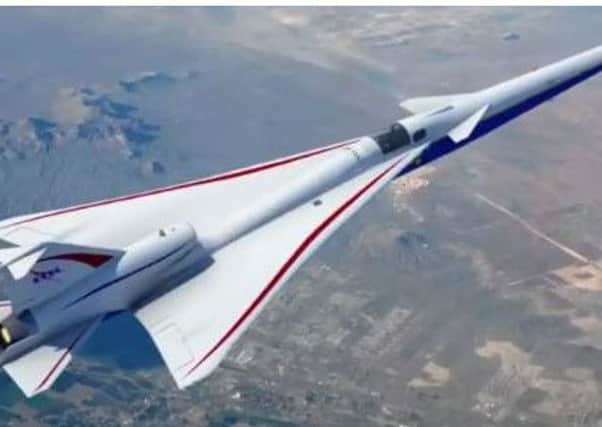NASA unveils plans for plane to fly from London to New York in 3 hours


The Low-Boom Flight Demonstrator (LBFD) X-Plane, revealed at a press conference in Washington on Tuesday, is scheduled to make its first test flight as early as 2021.
NASA says the “experimental aircraft” will allow experts to gather vital data that could open the way to ending the US ban on commercial supersonic flights over land.
Advertisement
Hide AdAdvertisement
Hide AdThe plane, though in its early stages, could have some serious implications on air travel as a whole.
Will NASA’s X-Plane carry passengers?
The prototype being developed by NASA and aerospace agency Lockheed Martin will not carry any passengers, and it will not be used for weapons or combat.
The project, which the US Government has stumped up more than $200m for, is purely experimental and will be used to inform scientists on how supersonic travel can develop.
Speaking at a press conference to launch the idea publicly, NASA said the LBFD cannot be “scaled up” to fit passengers.
But it has an explicit purpose of making commercial travel of this nature possible in the future – the project even comes with the strap line, “The great aviation transformation begins”.
When will a supersonic plane be commercially viable?
Experts believe that by understanding what shape the aircraft needs to be, and how to minimise the impact of breaking the speed of sound to the surrounding environment, they will be able to apply the knowledge to planes intended for passengers in future.
The hope is that the experimental X-plane will spawn a new generation of quiet supersonic plane which would fly from London to New York in three hours.
Sharing the news, Lockheed Martin said commercial travel is “on the horizon”.
How is it different to Concorde?
Advertisement
Hide AdAdvertisement
Hide AdConcorde was able to travel faster than the speed of sound, but the sonic boom it produced was so incredibly loud that the jet was forced to slow to conventional speeds over land to avoid rattling windscreens and causing other disruptions.
The challenge American aerospace experts are trying to overcome is how to deliver air travel at this speed without causing shock waves that disrupt the surrounding environment. Commercial supersonic carriers would also have to overcome the problem that eventually ended Concorde: public demand.
How to make travel at this speed affordable and profitable will be necessary to make such a project viable – something Concorde struggled to overcome.
What are the dangers of supersonic travel?
The prototype is intended to fully assess the risks, with years of working going into designing the X-Plane before it gets a pilot.
The clearest danger to the general public is the impact made on sound waves. Travel at faster than the speed of sound is banned over land in the US due to just how loud it is.
The new plane will produce a low boom that sounds like a “thump or heartbeat” and is about the volume of a car door closing.
It will do this by having a longer nose than conventional aircraft and by sweeping the wings back further to give a more slender streamlined shape.
NASA is conducting research into the views of people across the whole route of the plane’s flight path to better understand what people will tolerate, in the hope it will lead to the ban on over land travel of this nature being lifted.
This article first featured on our sister site the i.